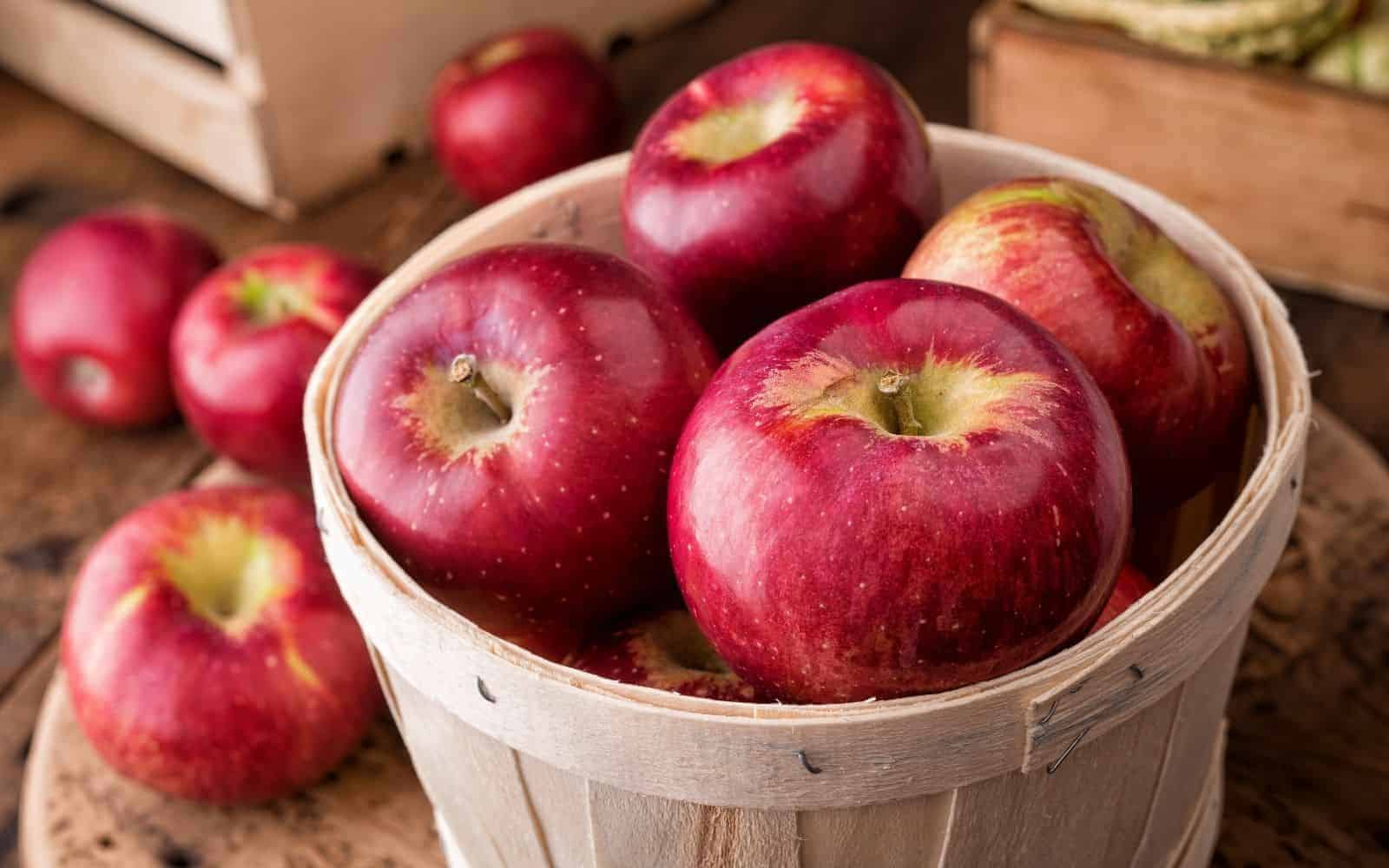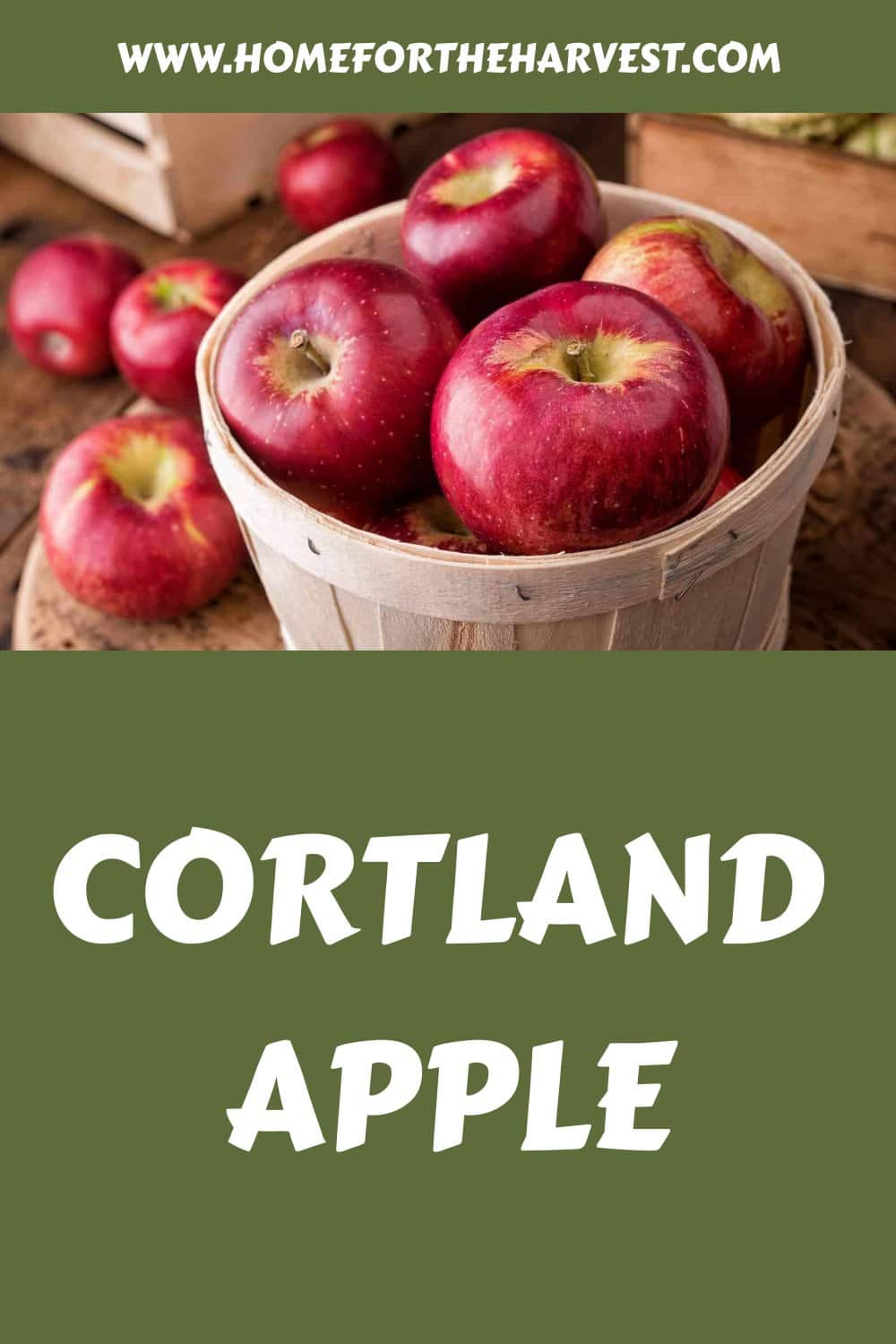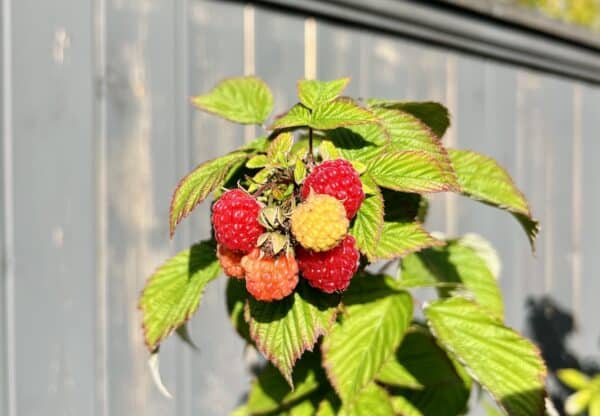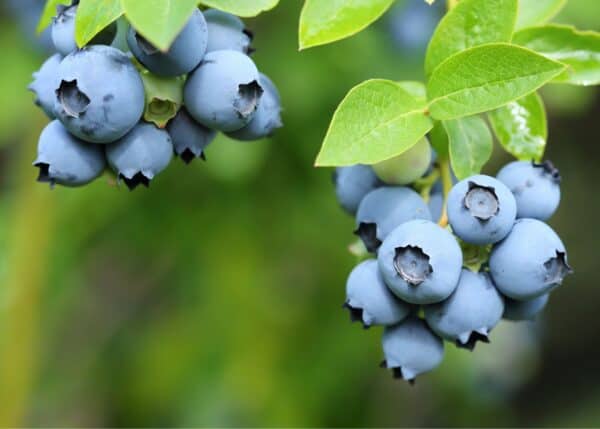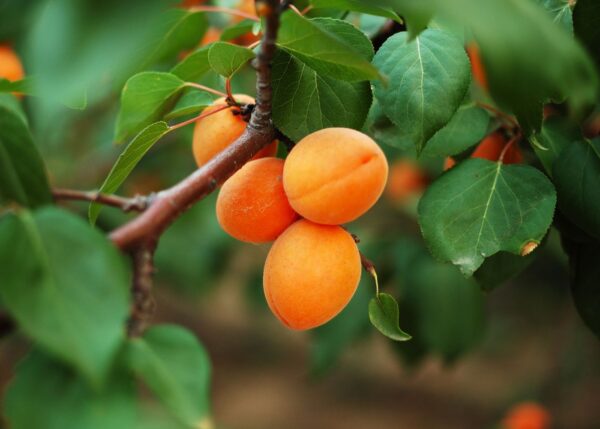Cortland apple is an American heirloom apple cultivar known for its bright red and yellow peel, sweet yet balanced flavor, and crisp white flesh that is naturally resistant to browning. They are wonderful to eat fresh right off the tree and are also popular for applesauce and pie. This variety was bred in 1898 in New York State from the popular McIntosh apple and has been consistently ranked in the top 20 apple varieties in North America.
Cortland apple basics
The Cortland apple is a cross between the McIntosh apple and the Ben Davis apple. This variety was developed by horticulturist Spencer Ambrose Beach in 1898 at the New York State Agricultural Experiment Station in Geneva, New York. The apple was named after nearby Cortland County, NY (about a hundred miles away).
Cortland is an excellent all-around apple variety and can be enjoyed fresh or baked into apple pies and other desserts. Cortland apples have a yellow background peel color covered with a blush of rich crimson red. When autumn nights are particularly cool, the red portion of the peel can turn almost maroon-purple. Some Cortland Apples have stripes or subtle freckles.
Inside, the flesh is bright white and is naturally slow to turn brown when cut. The texture is particularly fine-grained and very juicy. This is a soft variety without much fresh-eating crunch. One of the best uses for such a fine-grained fruit is to make applesauce. Applesauce made from Cortland apples is incredibly silky smooth, especially if the peel is removed rather than blended into the sauce. Cortland is one of the best apple varieties for applesauce.
Cortland apples have a balanced sweet-tart taste, making them popular for baking desserts. While Cortland apples do have a distinctive Mac-like taste, the flavor is generally sweeter than their McIntosh parent apples. This variety can also be almost effervescent when freshly picked. While not one of the most popular types of fresh-eating apples, Cortland is favored in baking and for applesauce.
Cortland trees grow to be about 12-15′ tall and 10-15′ wide. Where most apple trees produce fruit on branch spurs, Cortland trees produce fruit on the end of slender, 6-inch long branches. These trees are very similar to McIntosh trees, with a similar vase shape and scaly, gray tree bark. Cortland begins to bud during mid-season, starting in April, before blooming into delicate white flowers.
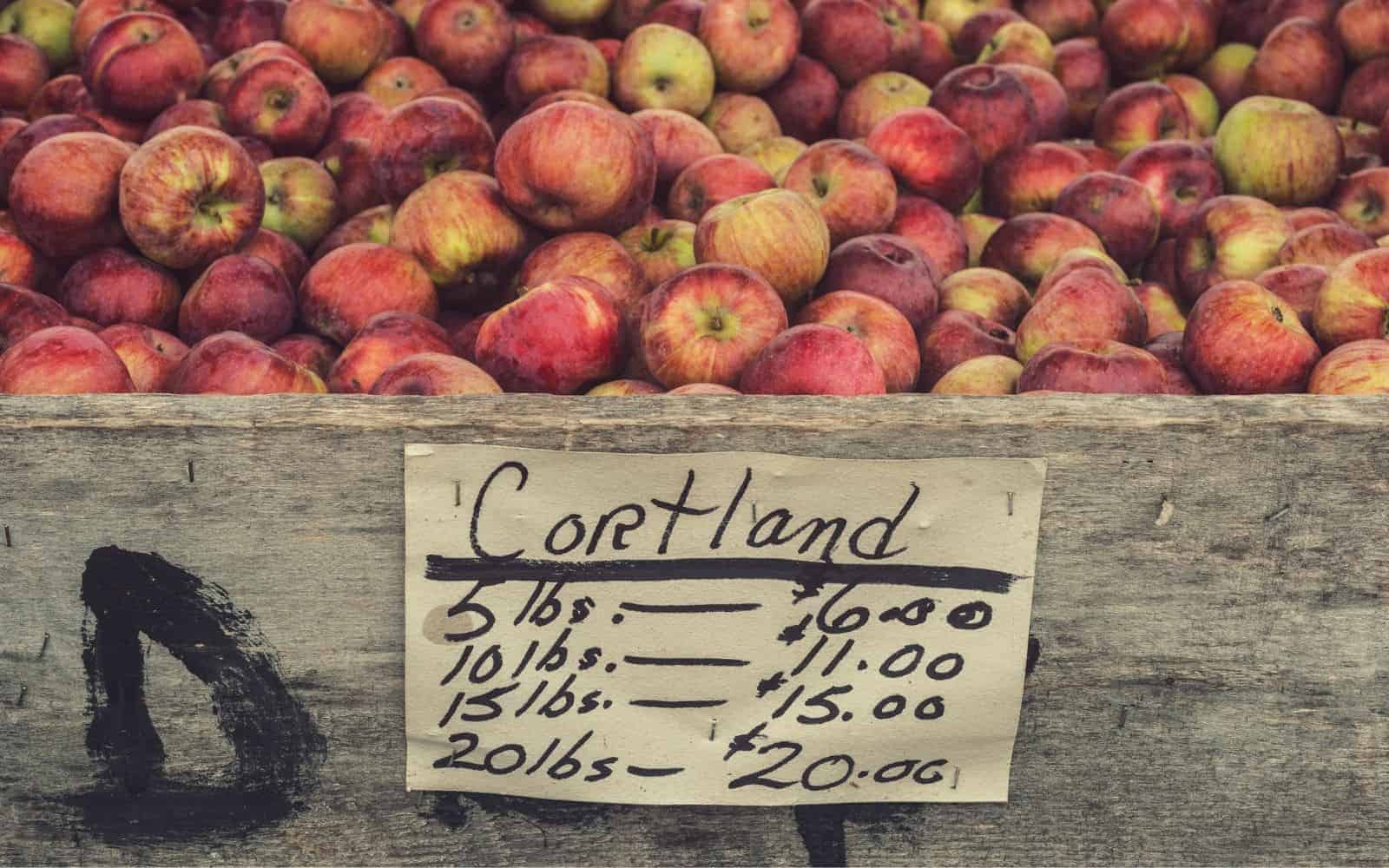
Harvest season for Cortland apples
Cortland’s harvest season is usually in September through early October. After being harvested, the apple will quickly lose its crispness if not properly stored in a cool spot. Cortland is a variety with fine-textured flesh that is best used as soon as possible after harvest as the flesh can become soft quite quickly.
“The soft flesh makes it disappointing for fresh eating, unless you catch it early enough in September that there is still a hint of snap and tartness; after that, it is an excellent sauce apple and a decent choice for salads, where truly crisp apples can be too distracting.”
Apples of Uncommon Character: Heirlooms, Modern Classics, and Little-Known Wonders, by Rowan Jacobsen
Cortland apple trees usually begin to produce fruit after 4 to 6 years after being planted. Once they begin to produce, these reliable trees will bear fruit annually.
Cortland apples typically cost about a dollar per pound. Each fruit weighs about a half-pound and costs about 50 cents. Prices vary by region, season, type of store/market, and whether purchased individually or in bulk.
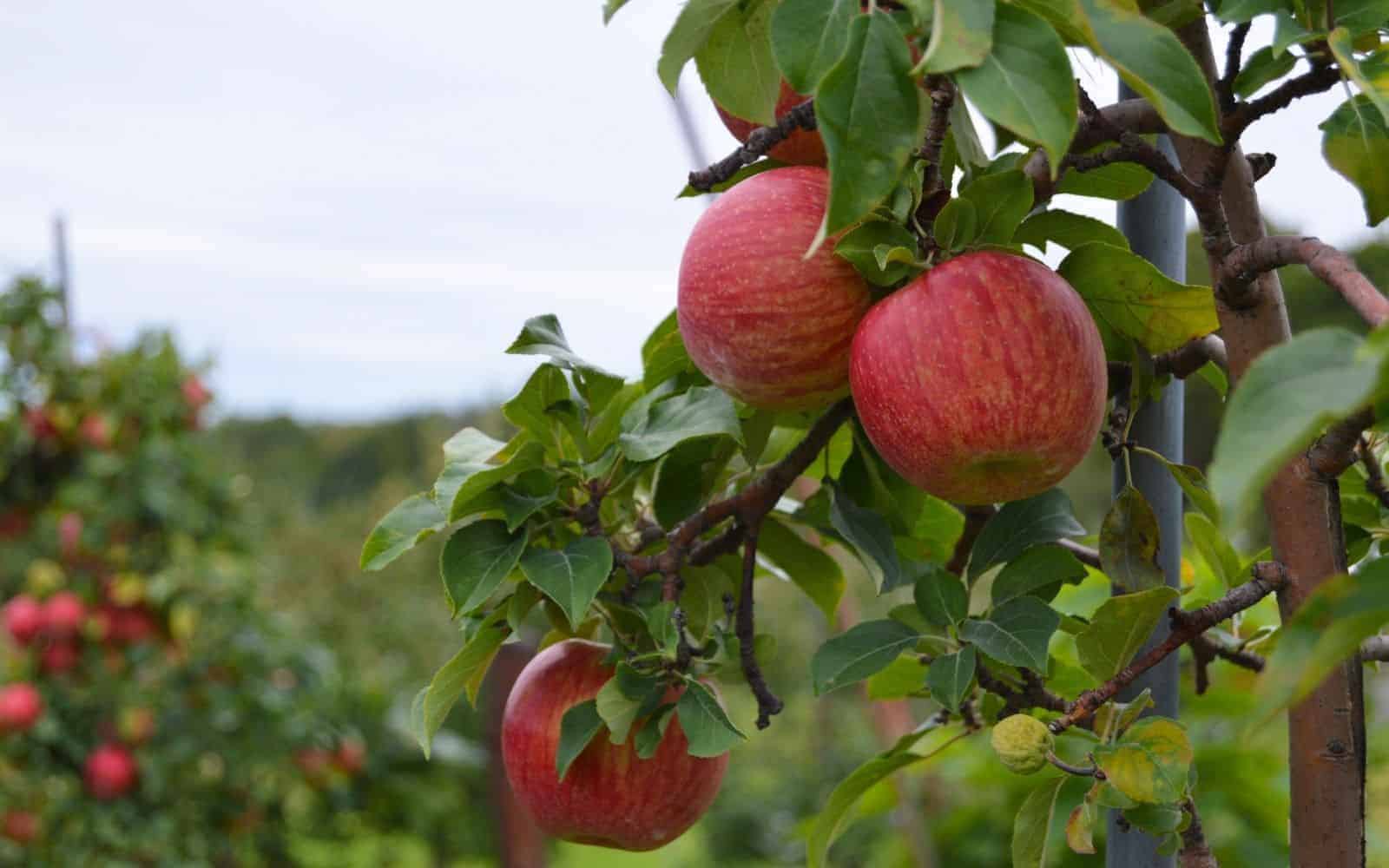
How to grow Cortland apples
Cortland apple trees need six to eight hours of sunlight per day and do best when planted in rich, well-drained soil. Apple trees tend to do best when planted in the fall, but they can also be planted in the early spring, provided they are well-irrigated throughout the heat of summer.
If your soil has significant amounts of clay, sand, or rocks, you may need to artificially improve growing conditions by adding plenty of manure, compost, shredded leaves, and other organic material. You’ll need to integrate this material to be at least 12 to 18 inches deep.
Water the apple saplings at least once a week during warm, dry weather (and more frequently during heat waves). Be sure the water reaches the roots by using a drip system or a soaker hose. Never overwater, and check to make sure that water is draining out of the soil well (look for ponded puddles to indicate poor drainage). After the first year, normal rainfall should provide adequate moisture; that being said, during drier-than-average seasons you will need to water occasionally.
You’ll also need to ensure a pollinator partner tree is nearby. Most apple trees, including this one, are not self-fertile and need a different variety within about 100′ for effective pollen transfer. Look for a nearby crabapple or consider planting a tree with a similar blooming time, such as Granny Smith, Empire, Honeycrisp, Macoun, or Liberty.
Don’t fertilize when planting. Once the tree begins to bear fruit (usually after two to four years of growing) you can supplement its growth with a balanced fertilizer. Never fertilize after July; feeding trees too late in the season causes new growth that can be killed in the frost. Read more about when to fertilize fruit trees.
Pruning apple trees is important because these trees bear fruit on the end of slender branches rather than dispersed through sturdy branches. Pruning keeps the branches strong and prevents the chance of fruit growing on weak branches. Pruning the central canopy will also increase sunlight to the interior of the tree, meaning the fruit will ripen better.
Thin any excess fruit to ensure a healthier crop and better-tasting fruit. Thinning also prevents branch breakage caused by the weight of a heavy crop. Once the Cortland apple trees begin to bear fruit, prune them annually.
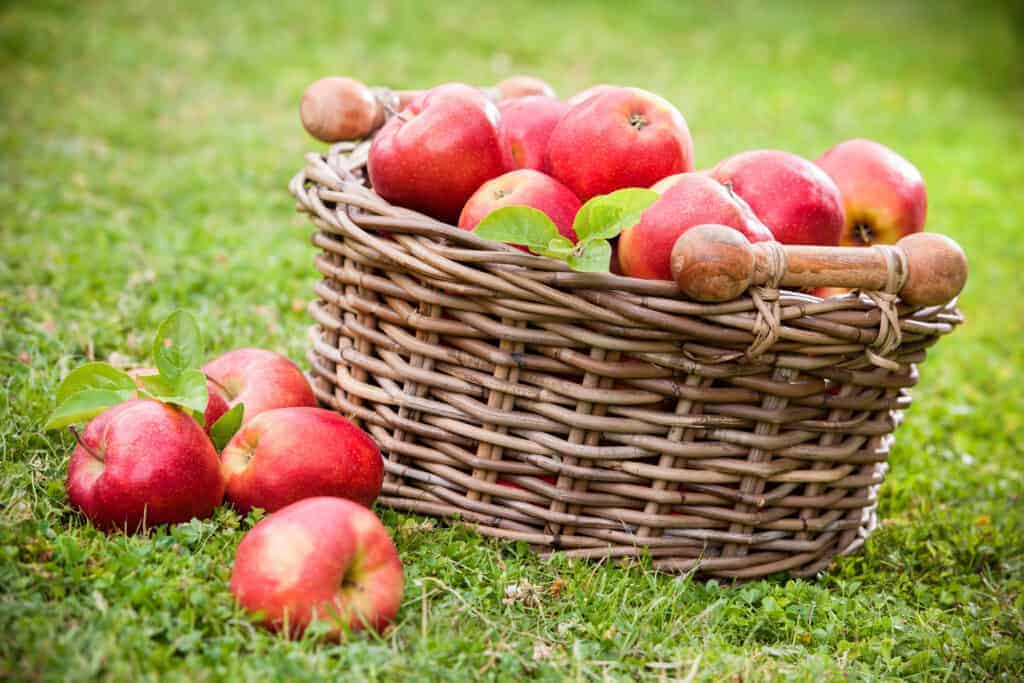
Troubleshooting growing issues
Protect your saplings from pests. Deer and small animals love fruit trees, from the bark to the leaves, and are fully capable of destroying a young tree overnight. Wrap the tree’s trunk tightly to protect it from voles and mice, and encircle it with a chickenwire fence to prevent rabbits and deer from reaching the tree. Covering the ground around the tree with mulch instead of grass can also protect the tree from mice and voles, as it removes their natural habitat.
Insects also threaten apple trees; and unfortunately, Cortland isn’t particularly pest-resistant– although apple scab is not a common disease for this variety. If you think your tree has already been infected, take steps as soon as possible to preserve the health of your tree and harvest.
In early spring, just before the leaves begin to bud, spray the tree with horticultural oil to smooth any dormant insect eggs. This prevents hatching and starves any adults that eat the eggs. Any excess oil will evaporate, so you won’t need to worry about residue.
In mid-summer, it may be helpful to hang sticky traps in and around the tree to catch apple maggots and flying pests.
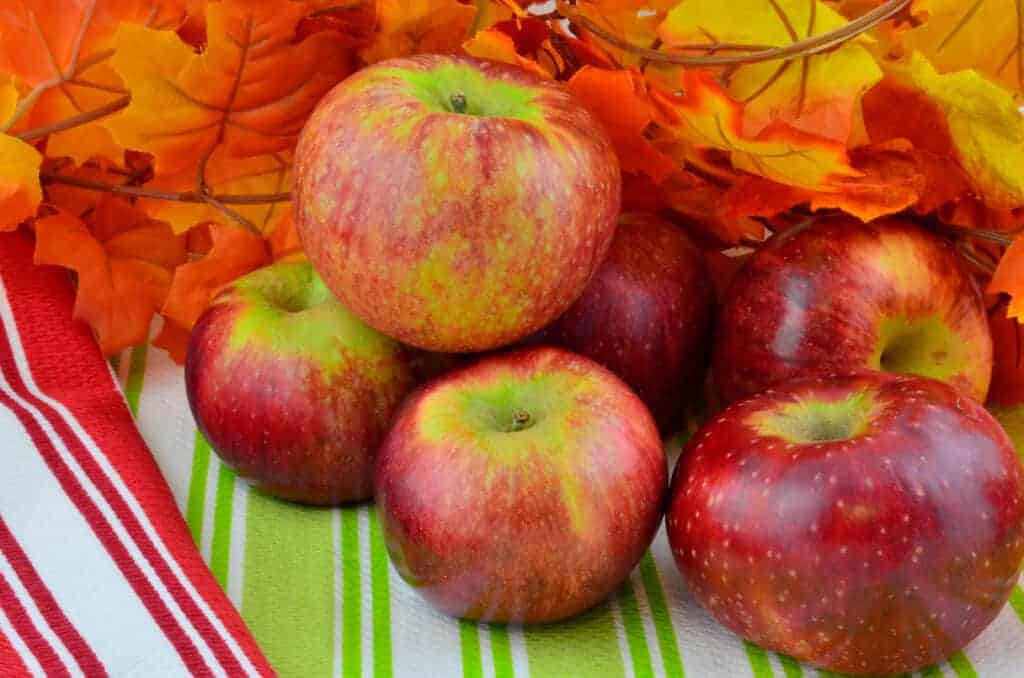
How to store Cortland apples
To store apples short-term, don’t cut them up. Even though Cortland Apples are resistant to browning, they will brown in storage. Keep the apples separate from other fruits and veggies– apples give off an ethylene gas which makes other fruits and vegetables ripen quickly. Keep your apples in the crisper drawer in your refrigerator or a cool, dark place at 30-35 degrees Fahrenheit.
For longer-term frozen storage, peel, core, and slice the apples. Soak them in water and lemon juice mix (4 cups water to 2 tablespoons of lemon juice) for five minutes. Drain thoroughly, place on a cookie sheet, and freeze for 4 hours or overnight. Store the apples in a freezer-safe container for up to one year.
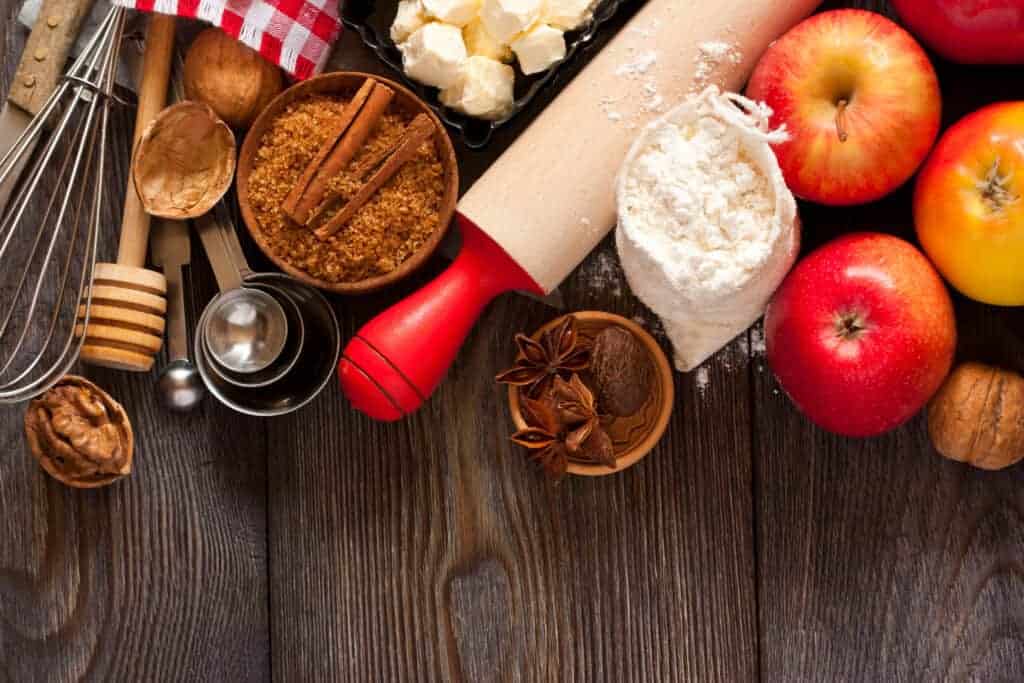
Recipes using Cortland apples
Because Cortland Apples are slow to brown and crisp, they can be used with flexibility that other varieties can’t. In addition to apple butter and jam, Cortland Apples provide the perfect texture for baked apple goods like apple pies. Martha Stewart’s Apple Pie with Cheddar Crust uses a mix of Granny Smith and Cortland apples.
Their resistance to browning also makes them preferable for salad toppings or fruit kabobs. Their sweet-tart flavor makes them a good choice for cider and apple juice.


